You’re probably frustrated with your smart kitchen gadgets that stop working after software updates, can’t talk to each other, and collect your cooking data without transparency. Open sourcing these devices transforms them from proprietary black boxes into collaborative tools that evolve with your actual needs. When you control the code behind your coffee maker, sous vide, or smart oven, something remarkable happens to both functionality and ownership.
Community-Driven Innovation Accelerates Development
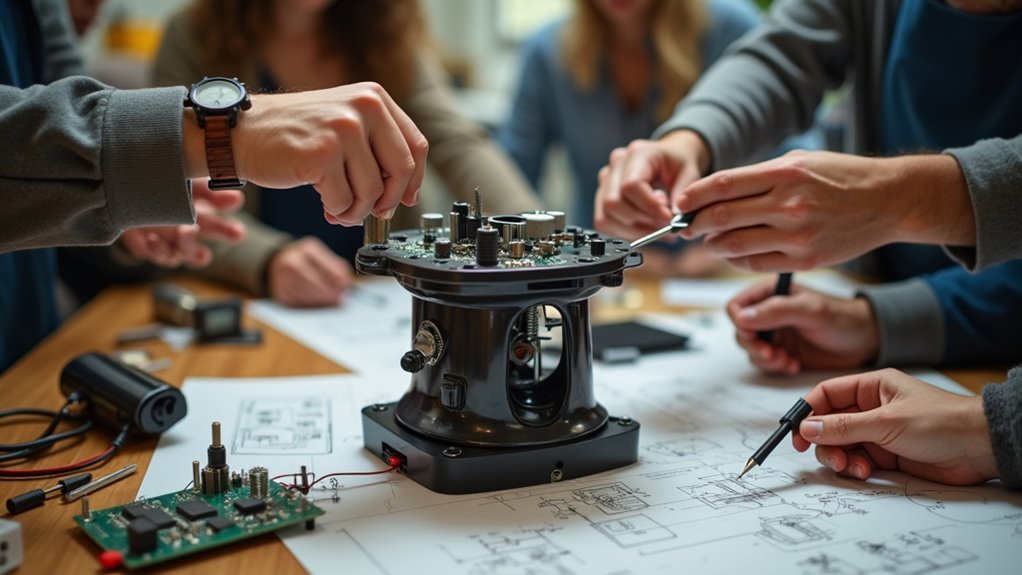
When you open-source kitchen gadget designs, you’re tapping into a powerful network of inventors, engineers, and everyday users who collaborate to solve real cooking challenges.
This community-driven innovation creates a feedback loop that’s impossible to replicate in traditional product development. You’ll find that designs become easy to change based on real-world testing from diverse kitchens worldwide.
The open source approach accelerates development through rapid prototyping cycles.
Rapid prototyping cycles eliminate traditional development bottlenecks, turning kitchen innovation from a months-long process into real-time collaborative problem-solving.
When someone discovers a design flaw or improvement opportunity, they can quickly modify the plans and share results with the community.
You’re not waiting months for corporate approval or market research. Instead, you’re getting immediate input from people actually using these gadgets daily, leading to practical solutions that address genuine cooking pain points efficiently.
Cost-Effective Solutions for Smart Kitchen Technology
You can build sophisticated smart kitchen gadgets without breaking the bank by leveraging open-source designs that use affordable, readily available components from your local hardware store.
These community-driven projects slash development costs since contributors freely share improvements and innovations, eliminating the need for expensive proprietary research.
You’ll bypass costly software subscriptions and locked-down ecosystems, giving you complete ownership and control over your kitchen technology.
Affordable Hardware Accessibility
While traditional smart kitchen appliances can cost thousands of dollars, open-source kitchen gadgets leverage affordable hardware components to democratize access to advanced culinary technology. You’ll find that platforms like the Nvidia Jetson Nano at just $100 make sophisticated automation achievable. Unlike proprietary systems where all rights reserved policies limit modifications, open-source designs encourage you to source materials locally from hardware stores.
| Component Type | Traditional Cost | Open-Source Cost |
|---|---|---|
| Processing Unit | $500-800 | $100 (Jetson Nano) |
| Temperature Sensors | $150-300 | $20-50 |
| Display Interface | $200-400 | $30-80 |
| Control Systems | $300-600 | $40-120 |
| Complete Device | $2000+ | Under $150 |
You can create customized solutions through modular designs without expensive proprietary parts, accessing shared schematics and community resources for cost-effective DIY manufacturing.
Reduced Development Costs
Because open-source development harnesses collective intelligence, you’ll greatly cut research and development expenses that traditionally burden kitchen technology creators.
When you embrace community-driven designs, you’re tapping into a vast pool of innovative ideas without shouldering the heavy financial burden of proprietary development processes.
You’ll find that readily available components and DIY manufacturing methods minimize your expenses considerably, making smart kitchen technology more accessible to consumers.
The open-source approach attracts broader contributor networks, resulting in faster iterations and improvements that streamline your development cycles.
Customization Meets Individual Cooking Needs
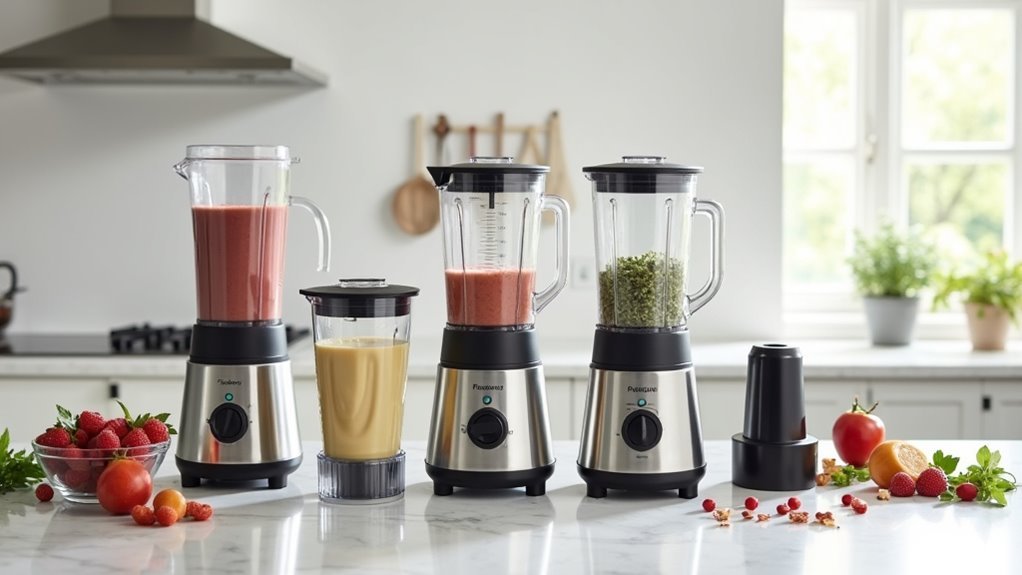
You can modify open source kitchen gadgets to accommodate specific dietary restrictions, whether you’re managing diabetes, following keto, or avoiding allergens.
The modular design lets you swap out components like heating elements, sensors, or processing attachments to match your cooking style perfectly.
This flexibility means you’re not stuck with one-size-fits-all settings that don’t work for your unique nutritional needs or culinary preferences.
Personalized Dietary Adaptations
When you’re managing specific dietary requirements like gluten-free or vegan cooking, open-source kitchen gadgets transform from simple appliances into personalized culinary assistants. You can modify recipes and cooking settings to match your exact preferences, while community-generated enhancements guarantee your gadgets evolve with changing dietary needs.
Machine learning algorithms integrated into open-source designs track your meals and identify foods, helping you maintain healthier eating habits aligned with your nutritional goals.
You’ll find user-friendly interfaces that adjust for portion control and dietary restrictions, making meal planning effortless.
The collaborative nature of open-source development means you can share your adaptations with others, contributing to a diverse repository of modifications that serves various dietary preferences and restrictions across the community.
Modular Hardware Flexibility
Beyond software adaptations, the true power of open-source kitchen gadgets lies in their modular hardware architecture that lets you physically reconfigure your appliances. You can swap components based on your cooking style, whether you’re batch-cooking for meal prep or crafting single portions for intimate dinners.
| Component Type | Standard Option | Custom Adaptation |
|---|---|---|
| Mixing Bowls | Fixed 2-quart capacity | Interchangeable 1-6 quart sizes |
| Heating Elements | Single temperature zone | Multi-zone precision control |
| Processing Blades | General-purpose cutting | Specialized dietary blades |
When components break, you won’t need proprietary replacements. Local hardware stores stock standard parts, making repairs affordable and immediate. This modularity transforms your kitchen into a personalized workspace that evolves with your culinary journey, supporting everything from keto meal preparations to gluten-free baking adventures.
Transparency in Design and Functionality
Since open source kitchen gadgets operate on principles of complete visibility, you’ll find that every component, wire, and heating element is designed to be accessible and understandable.
Open source kitchen technology ensures every wire, component, and heating element remains completely visible and accessible for maximum user understanding.
This transparency allows you to see exactly how your appliances work, giving you complete control over what you’re using in your kitchen.
When you choose open source designs, you’re getting:
- Access to detailed schematics and construction materials for deeper product understanding
- Visible heating elements and wiring that enhance safety awareness
- Clear documentation that eliminates the guesswork found in proprietary products
- Complete ownership without hidden complexities or manufacturer obfuscation
- Full knowledge of materials and components used in your appliances
You’ll never wonder what’s inside your gadgets or how they function.
Collaborative Problem-Solving Among Users
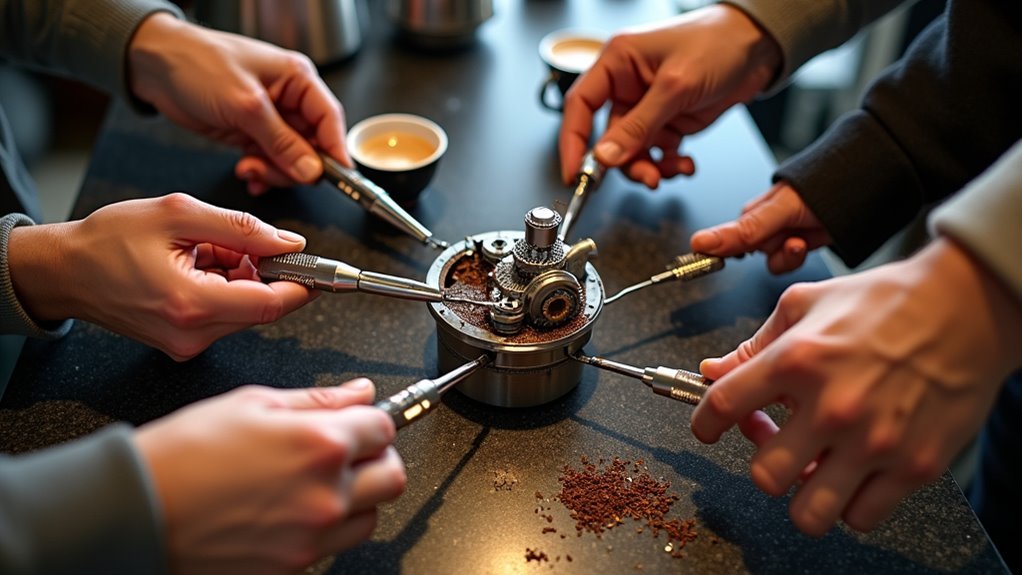
The collaborative nature of open source kitchen gadgets transforms how you approach cooking challenges, turning isolated frustrations into shared learning opportunities.
When you encounter issues with your appliances, you’re not stuck waiting for manufacturer fixes. Instead, you can tap into a community where users actively share modifications and improvements, creating solutions that address real cooking needs.
Community feedback drives functional enhancements and feature requests, making devices more user-friendly and accessible.
You’ll find creative adaptations for diverse preferences, from ergonomic improvements to specialized cooking techniques. By sharing schematics and bills of materials, you contribute to collective knowledge while learning new skills.
This collaborative approach means your kitchen technology evolves through actual user experience rather than corporate assumptions about what you need.
Modular Components Enable Easy Repairs
When you’re dealing with open-source kitchen gadgets, you’ll find that standardized connector systems make swapping out broken parts as simple as unplugging a cable.
You can replace individual components without specialized tools or technical expertise, since these devices use user-replaceable part designs that snap, twist, or slide into place.
This approach means you’re not throwing away an entire blender when just the motor housing cracks—you’re simply ordering a new part and installing it yourself.
Standardized Connector Systems
Countless kitchen appliances end up in landfills because a single component fails, forcing you to replace an otherwise functional device.
Standardized connector systems change this wasteful pattern by enabling you to repair gadgets with readily available parts.
These universal connections offer significant advantages:
- Easy sourcing – You can find replacement parts at local hardware stores instead of hunting for brand-specific components
- Cost savings – Standard connectors eliminate manufacturer markups on proprietary parts
- Quick repairs – Simple plug-and-play connections mean faster fixes without technical expertise
- Cross-compatibility – Components work across different brands and models
- Future-proofing – Your appliances stay relevant as new standardized upgrades become available
You’ll save money while reducing electronic waste, transforming your kitchen into a sustainable ecosystem of repairable, upgradeable appliances.
User-Replaceable Part Design
Building on standardized connections, user-replaceable part design takes repairability one step further by making every component accessible to you. When your blender’s motor burns out or your food processor’s blade dulls, you won’t need specialized tools or technical expertise to fix it. You’ll simply swap out the malfunctioning part and get back to cooking.
This modular approach dramatically reduces waste while extending your gadgets’ lifespan. Instead of tossing entire appliances, you’re replacing only what’s broken.
The Open Source Kitchen initiative provides accessible schematics and illustrated bills of materials, so you’ll easily source replacement parts from local hardware stores. This design philosophy empowers you to customize gadgets according to your preferences, fostering innovation and encouraging a DIY culture that puts control back in your hands.
Shared Knowledge Improves Safety Standards
As open source kitchen gadgets gain popularity, they’re fundamentally transforming how safety standards develop and improve across the industry.
When you share designs openly, you’re creating a collaborative environment where multiple eyes review potential hazards and propose solutions. This transparency guarantees dangerous components don’t remain hidden from users.
Community-driven innovation means you’ll see faster responses to safety concerns. Unlike traditional manufacturing, open source designs can be updated and distributed immediately when risks are identified.
You’ll also benefit from:
- Transparent manufacturing processes that expose potential risks
- User feedback that identifies real-world safety issues
- Shared experiences that prevent repeated mistakes
- Improved DIY practices through accessible repair information
- Enhanced safety awareness through deeper mechanical understanding
Freedom From Proprietary Software Limitations
When you choose open source kitchen gadgets, you’re breaking free from monthly subscription fees that drain your wallet over time.
You’ll gain complete control over your device’s code, letting you customize features without waiting for manufacturer updates or approvals.
Most importantly, you’ll own your gadget permanently—no company can remotely disable it or force you into costly upgrade cycles.
No Subscription Fees
Unlike traditional smart appliances that trap you in expensive subscription cycles, open source kitchen gadgets free you from ongoing software fees and proprietary restrictions.
When you choose open source kitchen gadgets, you’re making a one-time investment that pays dividends forever. You’ll own your device completely without worrying about monthly charges draining your wallet or manufacturers suddenly discontinuing support.
Here’s what you gain with subscription-free open source gadgets:
- Full ownership – No recurring payments or feature lockouts
- Permanent access – Your gadget won’t stop working if you miss a payment
- Community support – Free troubleshooting and improvements from fellow users
- Third-party integration – Add any compatible apps without premium restrictions
- Unlimited customization – Modify features without paying for “pro” versions
You’ll save hundreds annually while enjoying unrestricted functionality.
User Controls Code
While manufacturers lock their code behind proprietary walls, open source kitchen gadgets hand you the keys to complete software freedom.
You’re no longer trapped by predetermined cooking modes or limited functionality that doesn’t match your lifestyle.
With access to the underlying code, you can modify your devices to accommodate dietary restrictions, adjust cooking algorithms for your preferred textures, or add entirely new features.
Want your smart oven to integrate with your meal planning app? You can make it happen.
Need specialized settings for gluten-free baking? You’re in control.
This freedom transforms your kitchen gadgets from rigid appliances into adaptable tools that grow with your needs, ensuring they remain useful and relevant throughout their lifespan.
Permanent Device Ownership
Because manufacturers control proprietary software, your expensive kitchen gadgets can become obsolete overnight through discontinued support, forced updates, or server shutdowns.
Open-source kitchen gadgets guarantee permanent ownership, making sure you’re never at the mercy of corporate decisions that could brick your devices.
With open-source ownership, you’ll enjoy:
- Complete device autonomy – No manufacturer can remotely disable features or force unwanted changes
- Independence from company lifecycles – Your gadget survives even if the manufacturer goes out of business
- Freedom from subscription traps – Access all features without ongoing payments or app store dependencies
- Future-proof functionality – Community support guarantees continued compatibility and improvements
- True ownership rights – Modify, repair, and enhance your device without violating terms of service
You’ve invested in kitchen technology; open-source makes sure it remains yours forever.
Educational Value for DIY Enthusiasts
When you plunge into open-source kitchen gadgets, you’re not just acquiring new appliances—you’re entering a hands-on educational ecosystem that transforms how you understand and interact with technology.
You’ll access detailed schematics and illustrated bills of materials that reveal exactly how appliances function, turning every build into a learning opportunity. As you explore mechanics and customize functionality, you’ll develop problem-solving skills while connecting with a collaborative community that shares knowledge and troubleshooting expertise.
Every schematic becomes a masterclass, every modification a lesson in engineering, transforming routine kitchen builds into hands-on technical education.
The iterative design process welcomes your feedback, letting you contribute to product improvements while honing your technical abilities.
You’ll master everything from basic assembly to advanced modifications, gaining confidence that extends far beyond kitchen gadgets into broader DIY projects and sustainable living practices.
Sustainable Design Through Extended Product Lifecycles
As you embrace open-source kitchen gadgets, you’re actively participating in a sustainability revolution that fundamentally reshapes how appliances interact with our environment.
You’ll discover that open-source designs prioritize repairability and modification, dramatically extending your gadgets’ lifespans while reducing electronic waste.
- Repair instead of replace – Access schematics and component lists to fix broken parts yourself
- Source locally – Find materials from nearby suppliers, cutting transportation emissions
- Repurpose creatively – Transform salvaged materials into personalized kitchen solutions
- Upgrade modularly – Swap components as technology advances without discarding entire units
- Join the community – Collaborate with others to improve designs for enhanced durability
This community-driven approach guarantees your kitchen gadgets evolve continuously, creating more sustainable products that adapt to your changing needs.
Privacy Control Over Your Cooking Data
While proprietary kitchen gadgets quietly harvest your dietary habits and meal preferences for corporate profit, open-source alternatives put you back in the driver’s seat of your personal data. You retain complete control over what information gets collected and how it’s used.
Unlike app-controlled devices that demand constant internet connectivity and automatic data sharing, open-source designs let you modify software to implement your own privacy safeguards. You can customize these gadgets to operate entirely offline, eliminating unwanted tracking.
The open-source community prioritizes transparency and user consent over monetization schemes. When you choose these alternatives, you’re joining a movement that values ethical data management. Your cooking patterns, dietary restrictions, and food preferences remain yours alone—not commodities for corporate marketing departments.
Cross-Platform Compatibility and Integration
Unlike proprietary systems that trap you within a single manufacturer’s ecosystem, open-source kitchen gadgets break down compatibility barriers between different brands and platforms.
You’ll enjoy seamless communication between devices regardless of manufacturer, creating a truly integrated cooking environment. Open standards enable developers to build applications that work across multiple devices, giving you centralized control over your entire kitchen setup.
Open standards eliminate manufacturer barriers, enabling centralized control over your entire kitchen through seamless cross-platform device communication and universal application compatibility.
You can modify firmware to suit different operating systems, ensuring your gadgets adapt to your preferred technology stack.
Key benefits you’ll experience:
- Universal device communication – Your smart oven talks to any compatible thermometer or timer
- Flexible software integration – One app manages multiple brand devices seamlessly
- Real-time recipe adjustments – Gadgets share cooking data for ideal results
- No vendor lock-in – Switch brands without losing functionality
- Community-driven innovation – Collaborative development creates better integrations
Reduced Vendor Lock-In and Subscription Fees
When you choose open-source kitchen gadgets, you’ll escape the costly trap of subscription fees and vendor dependencies that plague proprietary appliances. You’ll modify and repair your devices without relying on manufacturer-specific parts or services, giving you complete ownership and control.
| Proprietary Appliances | Open Source Gadgets |
|---|---|
| Monthly subscription fees for software updates | Free community-driven updates and enhancements |
| Locked to single vendor’s ecosystem | Compatible with multiple manufacturers and developers |
| Hidden licensing costs and restrictions | No licensing fees or vendor-imposed limitations |
Open source designs create competitive markets where independent developers build compatible accessories and improvements. You’ll benefit from community-shared modifications that extend your gadgets’ longevity and functionality without additional costs. This approach eliminates vendor lock-in completely, ensuring your kitchen investments remain valuable long-term.
Faster Bug Fixes Through Community Testing
Thousands of community testers can identify bugs in open-source kitchen gadgets far faster than any single manufacturer’s quality assurance team. When you’re part of this collective effort, you’re contributing to faster fixes and more reliable products.
Community testing creates a powerful feedback loop that benefits everyone:
Community testing transforms isolated development into a powerful collaborative ecosystem where every user becomes a quality assurance partner.
- Diverse environments: Your unique kitchen setup helps identify issues that lab testing might miss.
- Real-world usage: You’ll discover problems during actual cooking scenarios, not controlled tests.
- Direct code access: You can suggest specific fixes instead of just reporting symptoms.
- Rapid iteration: Multiple contributors can work on solutions simultaneously.
- Cross-platform compatibility: Testing across different hardware configurations guarantees broader reliability.
This collaborative approach means you’ll receive updates and improvements much faster than traditional proprietary alternatives.
Frequently Asked Questions
What Legal Protections Exist for Open Source Kitchen Gadget Creators?
You’ll find copyright protections for your documentation and design files, plus trademark rights for your brand names. However, you can’t patent open source designs once they’re publicly disclosed, so you’ll lose exclusive manufacturing rights.
How Do I Start Contributing to Existing Open Source Kitchen Projects?
You’ll find open source kitchen projects on GitHub and GitLab. Start by browsing repositories, reading documentation, and identifying bugs or features you can tackle. Fork the project, make your changes, then submit a pull request.
Which Programming Languages Are Most Commonly Used for Kitchen Gadget Development?
You’ll typically encounter C and C++ for embedded systems, Python for prototyping and automation, JavaScript for web interfaces, and Arduino’s simplified C++ for microcontrollers in most kitchen gadget projects.
What Happens if an Open Source Kitchen Gadget Causes Food Poisoning?
You’d face the same legal liability as any manufacturer. Open source doesn’t shield you from responsibility if your gadget’s design flaws cause harm. You’re still accountable for safety testing and warnings.
Can I Sell Products Based on Open Source Kitchen Gadget Designs?
You can typically sell products based on open source designs, but you’ll need to check the specific license terms. Some licenses require you to share your modifications, while others don’t restrict commercial use.

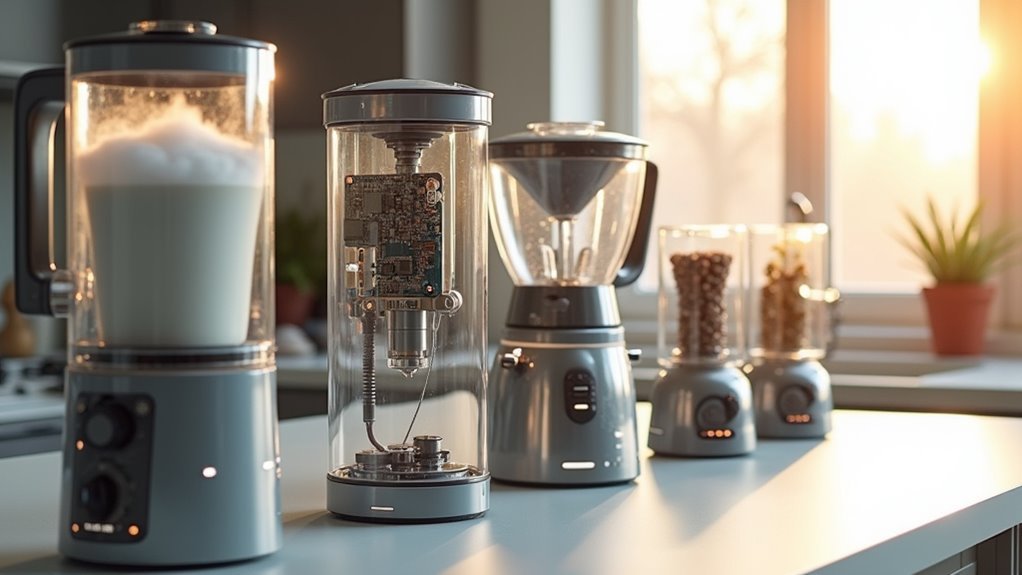
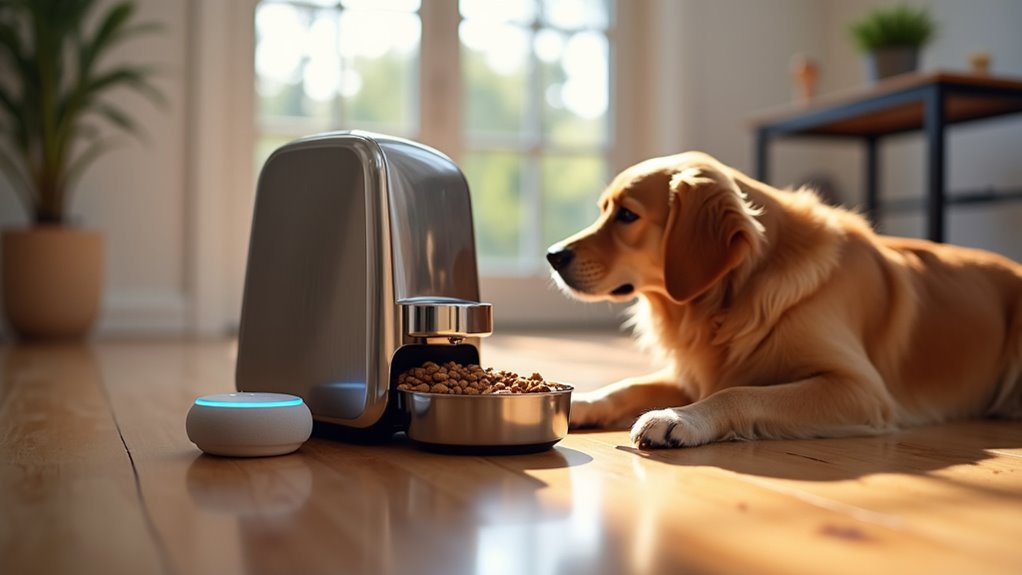

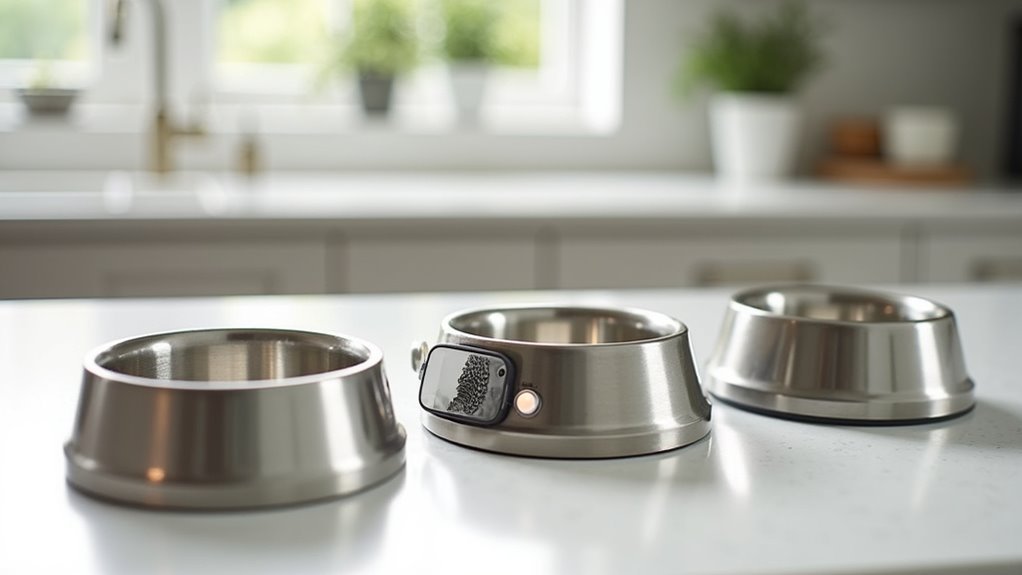
Leave a Reply